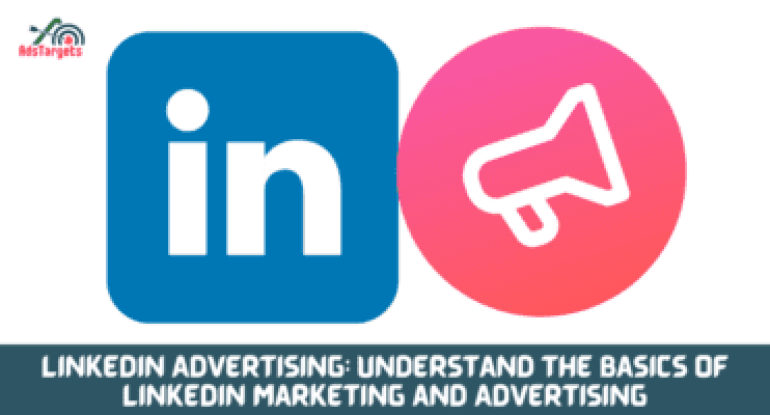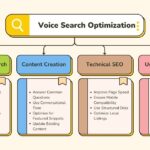LinkedIn is a social media marketing hub for executives, professionals, business owners, freelancers, clients, and customers in all business niches
It is a business platform where people build profitable connections based on their industry or niche.
From the foregoing, it is easy to tell that LinkedIn communication is deliberate and targeted making it completely different from other social media marketing platforms where advertising sometimes feels like one is shouting into the wind where no one can hear you because they don’t have a connection with you.
LinkedIn advertising gives a near guarantee that your advertising voice is going right into the eardrums of your target audience.
This gives LinkedIn ads an edge over a great number of advertising channels an advertiser have at his hands.
Placing your ads on LinkedIn helps you engage a community of professionals to drive leads that are relevant to your business.
LinkedIn ads thrive on the shoulders of established rapport, relevance, and value addition. They are best suited for B2B marketing since the platform holds a pool of professionals roaming its street.
Do you know that 80% of B2B sales and leads generated from social media advertising come from LinkedIn?
This does not suggest that it is less important for businesses that directly deal with the end users.
With over 822 million professionals and 57 million businesses on the platform, LinkedIn ads can be used to promote brand awareness, increase leads, and bring in more revenue to your business.
A lot of advertisers are already captured by the waves that LinkedIn ads pull, if you haven’t caught the wave, now is the time to hop aboard and be counted among successful brands in your niche.
Table of Contents
ToggleWhat is LinkedIn Advertising?
LinkedIn Ads are the engine room for B2B advertising. The social marketing platform provides advertisers with unique opportunities to interact with a business-minded audience.
Using the LinkedIn advertising platform is a great way to promote your business and direct your ads to a very well-targeted audience.
The great value of
is that they are not only for B2B businesses. NGOs, universities, and a variety of other organizations may leverage this great ad platform to reach their particular goals.
How to Use LinkedIn Ads To Improve Your Business
It is only right that the first things should come; therefore the first step to running LinkedIn ads will be to create a page for your page. Follow the steps below to arrive at a successful page creation.
#1. Create a user account for yourself.
To access LinkedIn, the key to the doorway is to create a personal account; this account will serve as the administrator of the brand page.
In the face of crafty cybercriminals, you need to take online security seriously. I will recommend you sign in with an email address.
#2. Create a LinkedIn Business Page
LinkedIn Pages provide a platform for businesses to share information about their brand with their community.
So to create a LinkedIn page, click on the icon “work” in the top right corner of your LinkedIn homepage. Scroll down & click create a Company Page.
Done with that, select your preferred Page type from the following options:
#1. Company
#2. Showcase page
#3. Educational institution
Then input your Page identity, company credentials, and Profile details information in the relevant fields. Check the verification box to verify if you are confirmed with the right to act on behalf of that company in the creation of the page.
You are almost getting to the end of this process. Click the Create page button and then click the Start building your page! Your page setup is complete. Congratulations.
# 3. Optimize your Page
What we touched on above are the basics, now you need to grow traffic on your page to boost leads and sales. To do that, you need to optimize your page.
This helps your brand get higher rankings in search engines and grows your overall site quality while improving the user experience.
To achieve this, scroll down & click the blue Edit Page button. Fill up all the fields in this extra information area.
This will clearly define to users what your business deals in and help in your LinkedIn SEO journey. It is revealed that companies with complete profiles get 30% more views weekly.
key areas your need to complete in your LinkedIn profile
#1. Logo: Adding your organization’s logo and a cover image to your profile helps to bring your Page to life and gives it more attractiveness to visitors.
#2. Overview: In a catchy fashion, capture the relevant terms and phrases that describe your organization’s mission and purpose for existence.
#3. Organization info: Enter your website URL and location, and choose your industry and company size.
#4. Call-to-action button: Call-to-action links and buttons act as signposts informing your users what they need to do next. Without CTAs, users may battle to see the path to buying a product or signing up for a service.
Therefore, customize your button to agree with your goals and track clicks in the admin view or visitor analytics.
Tips for LinkedIn Page Optimization
#1. Choose the right profile picture
Your LinkedIn profile is the window into your brand; it should be attractive and welcoming to your users. It should serve them a good impression.
Make sure that your profile tells your story. Take a headshot photo wherein you are looking directly into the camera. The emphasis is on the face and the expression, smile with your eyes.
#2. Add a background photo
Your background photo is the second visual element at the top of your profile page, make sure it carries elements of your brand story in it too.
The cover photo defines the context and shows a little more about what matters to your brand. The right background photo helps your page outstanding, captures attention, and retains memories.
#3. Use Your Headline Field to Describe Your Business Role
Why do you do what you do, and what inspires you? If you have got sales representatives at your company who are on the ball with social selling, take a glance at their profile page headlines for inspiration.

#4. See your summary as your blank page where you will tell your story
It is shocking how many people leave this important field blank when creating their LinkedIn profiles. For such people, hear this. Leaving this box empty is your way of throwing away the chance to tell your story.
So don’t just use it to boringly list your skills or the job titles you have been on. Breathe life into it with your brand story, don’t be afraid to invest some time, try a few drafts, and run your summary past the existing practice. This is your most personal piece of content marketing, pay attention to it.
#5. List your relevant skills
Rolling out your CV helps strengthens the description in your Headline and Summary, and provides a platform for others to validate you. However, the key here is staying relevant.
#6. Spotlight the services you offer.
Filling out the Services section of your profile with a range of services that you offer can boost your visibility in search engines.
#4. Build your Page following
A huge social media following is a form of social currency and social proof. When people users go to your page and see your massive following, they naturally picture your business as legitimate.
They make up this positive impression of your business because nobody would find you worthy of a following if you aren’t trustworthy. Social currency and proof is a very powerful tool and can help you reach more people and make sales.
Again, do you know that each of your followers is money in a box waiting to be broken open? When people follow you on social media, they are expressing an interest in what you have to offer. They are already in your in sales funnel waiting to get to the bottom of the funnel.
So building your social media following is so crucial to your LinkedIn ads journey. After all, no one is going to know your Page exists unless you tell them. Here are a few ways you can build your page following:
#1. Share it: On your LinkedIn Home Page, click on Share Page beside the Edit button. Share your new page on your LinkedIn profile and request your employees, customers, and others to follow it.
#2. Link the Page from your website: Link the page to all your other social media handles in the footers, this is another opportunity to capture relevant members and direct them to your brand.
#3. Request employees to update their profiles: Every employee is likely to list their latest role with their present employer on LinkedIn. However if at the time of employment your business has not created a page, there is a need to ask them to update and link the page in their profiles.
This lets their contacts discover and follow you, once they follow you; the LinkedIn algorithm shows the user as an employee at your company. This is still to your advantage. How?
Showing the number of employees you have can help your company authorize credibility on the platform.
#4. Send invitations to follow: You can send invitations to your connections from your page. LinkedIn cap how many invites you can send in a day to ensure people don’t spam.
#5. Execute your LinkedIn ads strategy
Promoting your business on LinkedIn requires a set of clearly defined goals and strategies.
And to develop a LinkedIn strategy that works requires a deep understanding of your target audience. Let’s take a look at some of the defined ways to go right with the LinkedIn ads strategy.
#1. Define Your Goals
The type of content you publish and the procedure you use to distribute it on LinkedIn rests on your ultimate objective. That is why it is important to draft your goals at the onset of your LinkedIn ads strategy.
You may go for one or two goals in your strategy, LinkedIn advertising goals include:
#1. Engage with your target audience
#2. Generate qualified leads
#3. Boost sales
#4. Build brand awareness
#5. Strengthen brand reputation
#2. Define Your Audience
Once you have identified the goal to pursue in your LinkedIn ads journey, the next bold and important step is to define who could help your business achieve those set goals.
You can define your target audience using a set of parameters such as profession, industry, age, location, gender, and other demographics.
For instance, you may have an eBook for heads of organizations. In such a situation, your target audience will consist of persons from the top managerial cadre in organizations. They may have job titles such as “manager,” “managing director,” “director” or “CEO” and more.
#3. Create Relevant and Engaging Content
I believe each piece of content for marketing is crafted with a purpose, and that goal should be to address the pain points of your customers.
As you build out your LinkedIn ads strategy, you should put all of your efforts into making content that is aligned to the needs of your customers because only content that is considered relevant is consumed by online users.
Relevant content should be informational, helpful, and entertaining to the user. This is why websites that use this kind of material are given better attention on search engine results pages ( SERP).
Relevant content shows potential customers that you know their pain points and are addressing them in their user journey with your brand.
#4. Use Images and Videos that play to your LinkedIn ads campaign objective
Strategically utilize images and videos in your LinkedIn ads journey to grow brand awareness and drive qualified leads to your business.
Users across the globe respond more positively to ads with images and animation. Use icons, GIFs, stock photos, graphics, and videos that are designed to help convert the audience to crush your ad objective.
According to LinkedIn, images lead to a 2x higher comment rate & LinkedIn videos are 5x more likely to ignite a conversation.
LinkedIn suggests that you create short 1-2 minute videos with proper subtitles. Make sure the videos are original and reflect the vision of your brand and capture the objectives of the ad.
#5. Automate Your Outreach
To grow your LinkedIn profile, you need to create more relevant connections during the initial stages. For this, you need to do a lot of reaching out to potential leads on LinkedIn- who might be attracted to your products.
However, manual outreach can be demanding and time-consuming. For that reason, you need to consider automating your outreach.
This is where you would need the Dux-Soup LinkedIn Automation. Dux-Soup automatically engages with the potential customers you select on LinkedIn. It endorses their skills, sends them personalized connection requests on your behalf, and also sets up a campaign for your prospects.
This can help boost your engagement and drive more sales.
#6. Track Website Traffic
See how your LinkedIn ads led to valuable actions on your website, including content downloads, sign-ups, purchases, and more. You can also track conversions from people who viewed your ad, not just those who clicked.
Tracking your LinkedIn advertising stats provides you with additional insights to better understand the actions people take on your website after viewing or clicking on your ads.
Tracking website traffic gathers insights into post-click and view-through conversions of your LinkedIn ads campaigns, giving you the means to measure the pay-off and ROI of your ads.
Importance of a LinkedIn Ads strategy
Because the platform consists of a different audience from the other social media marketing platforms, there is every need to have an adverting strategy specific to the platform.
On LinkedIn, aggressive advertising is a no-go route because they don’t yield great results as most if not all of your connections frown at messages blatantly pushed on them.
With 4 out of 5 LinkedIn members driving business choices for their companies and 80% of B2B leads arising from LinkedIn ads, it is no surprise that LinkedIn is known as the dominant social media pulpit for professionals.
LinkedIn ads require a different approach and strategy that offers what members of the platform are comfortable with.
Types Of Content You Need To Run LinkedIn Ads
While the same advertising strategy doesn’t fit every audience type, it doesn’t have to be complex. Don’t use the content made for a red hot audience and think it will serve well on the tray of the cold audience too.
When it comes to running ads, you will notice that most companies are running the wrong type of content toward a cold audience.
Cold audiences are, broadly speaking the most difficult and costly to convert into paying customers. you have to start with them from the beginning, introduce the product, let them learn the benefits and features, and do this for a considerable length of time until they become comfortable with your brand.
To better understand which ads to place on LinkedIn to target the right people, you will need to have a look at the three content friction funnels.
#1. Top of The Funnel (TOFU) Audience
These are people who are unaware of the problem you are solving and also the solution you are bringing to the table.
Testimonial videos to people who have never heard about you make sense, they help your prospect see that your existing customer are so happy with your business which shows that if they patronize you, their pain points would be addressed too.
#2. Middle of The Funnel (MOFU) Audience
People at this stage of the funnel are aware of the problem you are solving, but not aware of your solution.
Book A Demo strategy for people who don’t know your solution makes sense. This Content spurs the first step in a person’s journey towards becoming a customer.
#3. Bottom of The Funnel (BOFU) Audience
People who are aware of the problem you are solving and are also aware of your solution.
At this level of the funnel, you could target your audience with any of the following:
#1. Product listicles
#2. Product comparisons
#3. Case studies
#4. Product use case content
#5. Webinars
#6. Courses
#7. Ebooks/Whitepapers
#8. Videos
#9. Documentation
Conclusion
LinkedIn offers an abundance of opportunities for advertisers to connect with the right decision-makers and senior-level influencers.
It has grown into a powerful advertising tool that can help you build brand awareness and sell your products or services without staying awake at night worrying about the fate of your ad campaign.
A deep understanding of your end objectives and target audience is important for the success of your LinkedIn ads campaign. Be intentional about creating a compelling Company Page and optimizing it for user search experience.
It is high time that you recognize its importance and starts crafting a powerful LinkedIn ad campaign.
In addition, you should tailor your content strategies and post content that will resonate very well with your audience on LinkedIn.
Lastly, track your website traffic to find which companies or users are visiting your website from LinkedIn.








